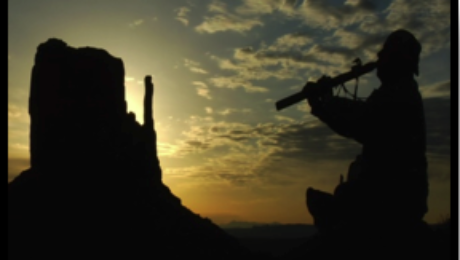Mind Music
When my cell phone rings, to notify me that you are calling, the five tones that fill the air may seem familiar, particularly if you are a Steven Spielberg fan. In his now, ancient film, “Close Encounters of the Third Kind,” the means of communicating, between extraterrestrial beings and humankind, across the universe of time, space, language and culture, was through musical tones. Today you may know that scientists are hard at work trying to understand a whole new world of musical neuroscience and how musical conversations take place in the minds of musicians. One goal of musical neuroscience is to better understand the brain’s circuitry and how it can re-wire itself. The hope is that this may lead to new treatments for neural disorders. Perhaps, as we age, we can rewire our brains!
If your life requires communication, you will understand how, many years ago, during my treasured days with Atlantic records, I had the experience of hearing and seeing my dear friend Charles Lloyd and his quartet on stage at the Monterey Jazz Festival, in California. The group opened their set with a song titled “Forest Flower.” I will never forget it. Although I had listened to and loved jazz since I was truly a child, I had never recognized how clearly and powerfully jazz musicians could talk to each other through their music. Charles laid out the most beautiful sax intro and then handed off the riff to Keith Jarrett on the piano. The result was magic and as the music was shared from one performer to another, the audience responded with a growing, enthusiastic ovation. The world responded by making the Forest Flower “LP” one of the best-selling jazz recordings of all time. What sort of music do you enjoy? Perhaps I should ask “what sort of music talks to you?
More articles like this can be found in “The Desert Wind,” my Monday morning blog series. (See the sidebar.) If you enjoy these inspirational messages, please click here to subscribe to my blog.
=^..^=
- Published in The Desert Wind
Wings
There is nothing more inspiring than to look up in the cold grey winter sky and see a flock of wild geese passing over. Here, in the west, weather wise, our seasons don’t always conform to what the rest of the nation is doing and so, for the last few weeks there have been long strands of wild-wings in the skies over head. The flight of waterfowl always indicates to me either the end, or the beginning, of a primal journey. They are either going to or returning from places familiar, over routes that require no compass or satellite guidance. Perhaps you live in an area where you have seen the long “V” formations overhead during migration.
As my Tribal friends have taught me, in life, as in business, understanding why things happen in nature can serve as a beneficial guide to harmony and increasing success. There are two main reasons that geese fly in formation. The first is the conservation of energy. Imagine flying a thousand miles or more each year. Each bird flying slightly above the one in front decreases the wind resistance and allows for long periods of flight without the need to stop and rest. Geese, flying alone, have an increase in heart rate that requires more frequent stops to rest and a greater strain on their heart and health. The second reason for flying in formation is that it is much easier to keep track of every bird in the group. Communication and coordination are improved in this way.
Don’t spend time worrying about your place in the formation… You too will be called upon to lead one day. Fly strong and true!
More articles like this can be found in “The Desert Wind,” my Monday morning blog series. (See the sidebar.) If you enjoy these inspirational messages, please click here to subscribe to my blog.
=^..^=
- Published in The Desert Wind

